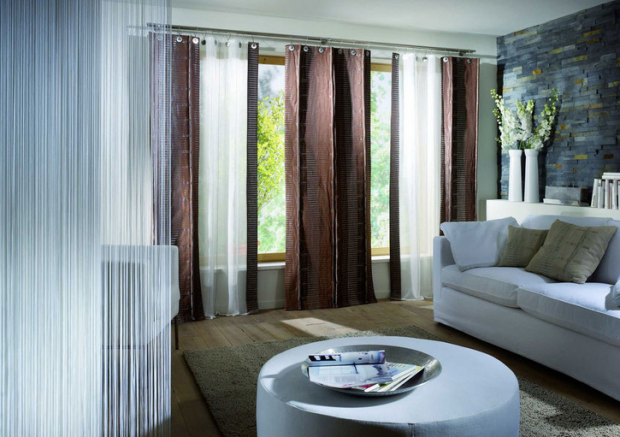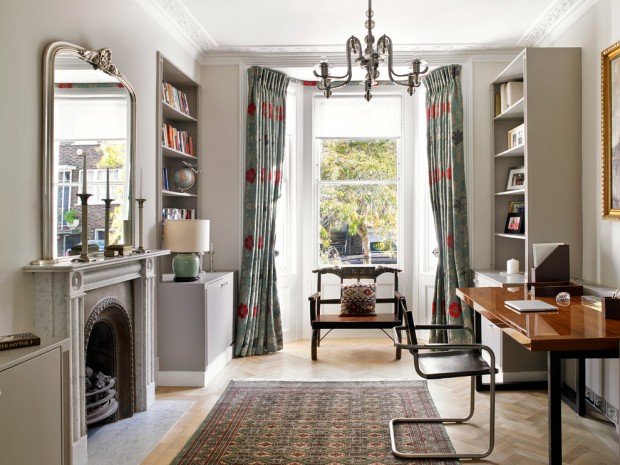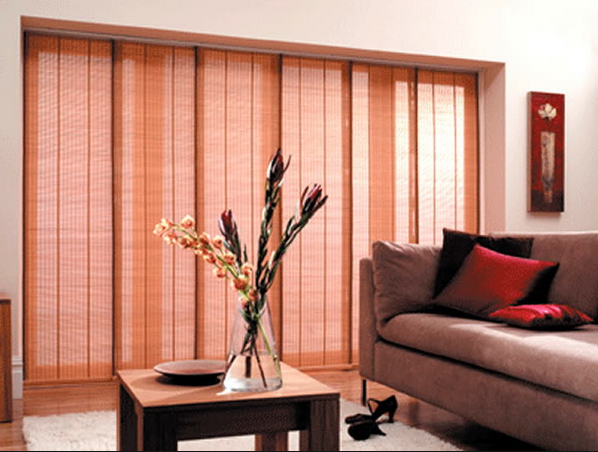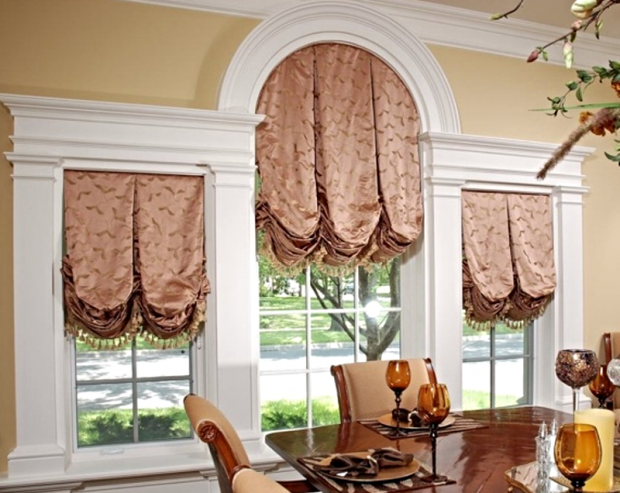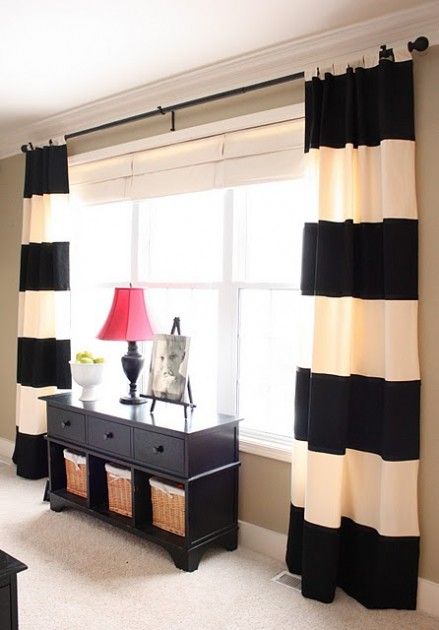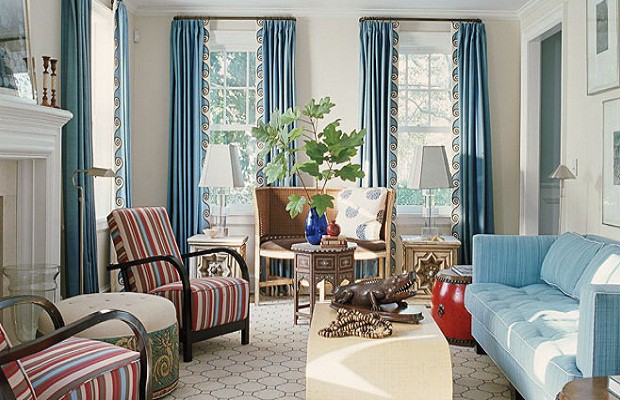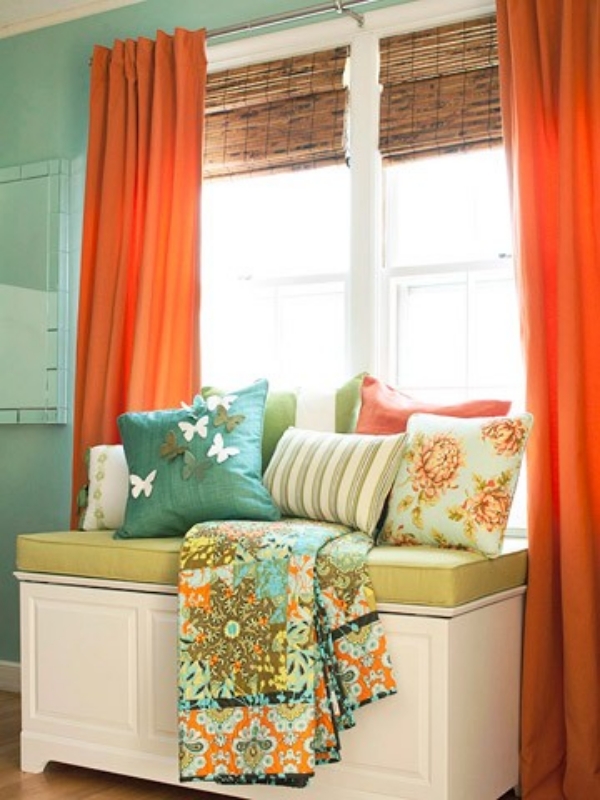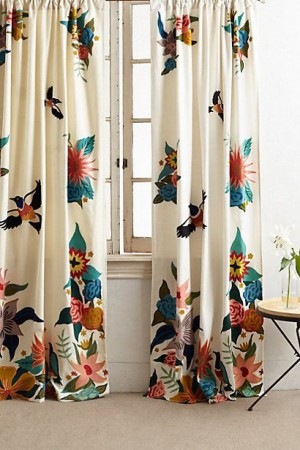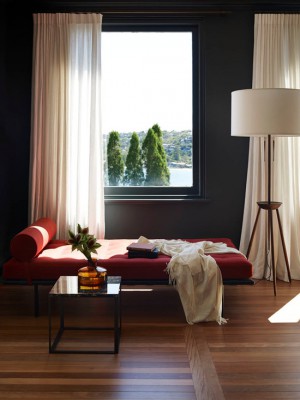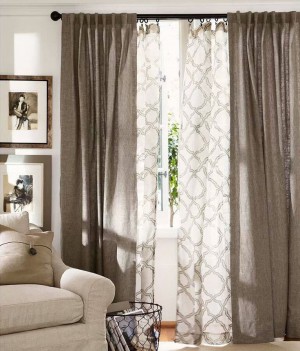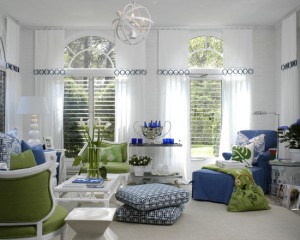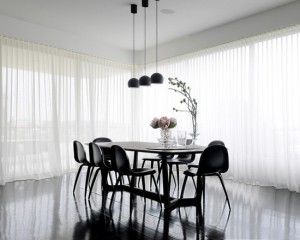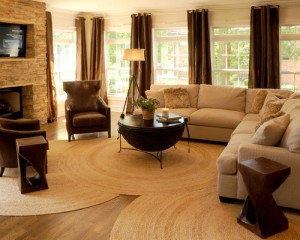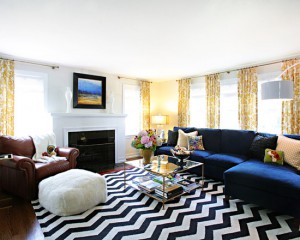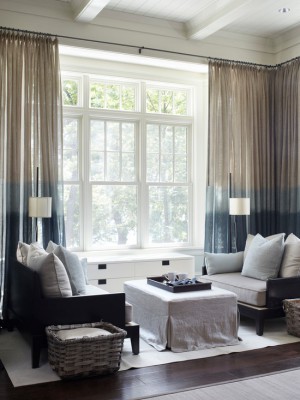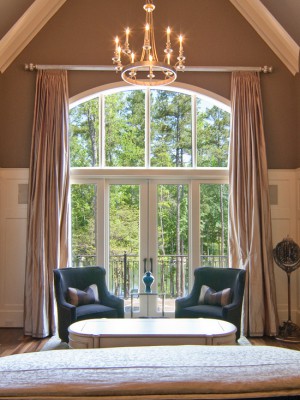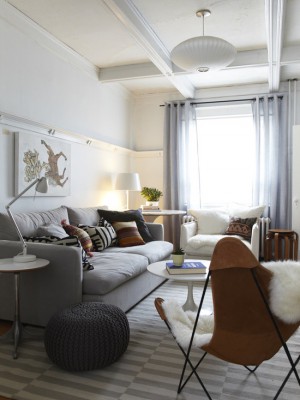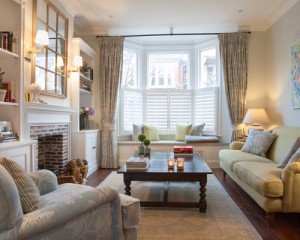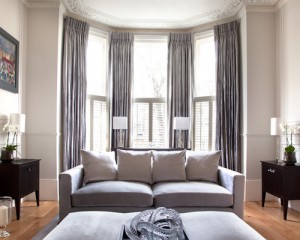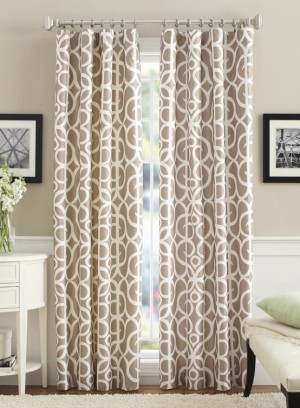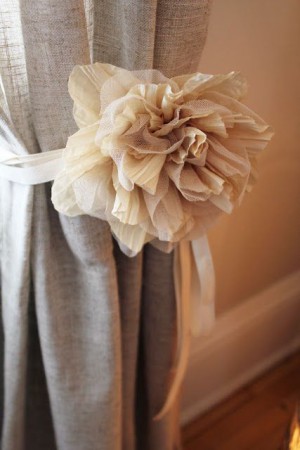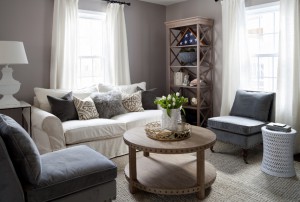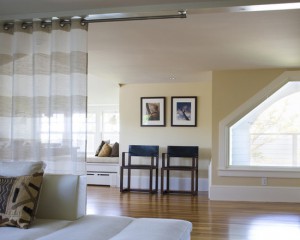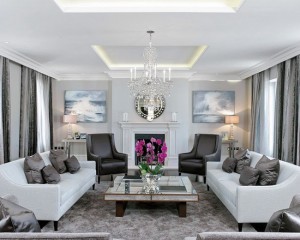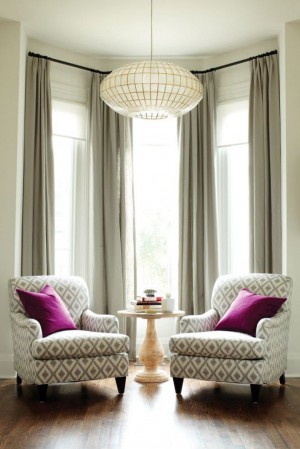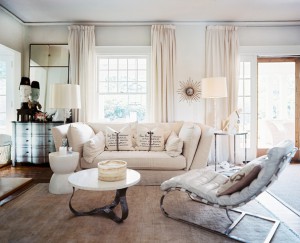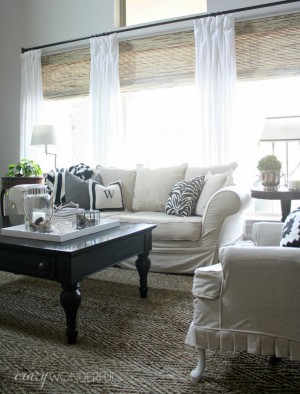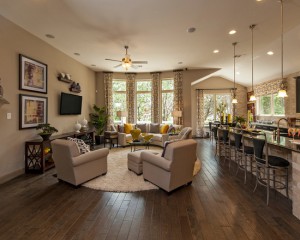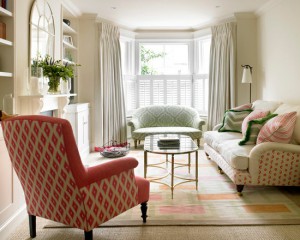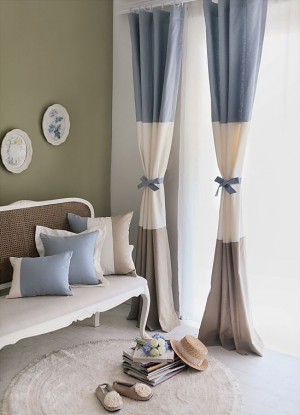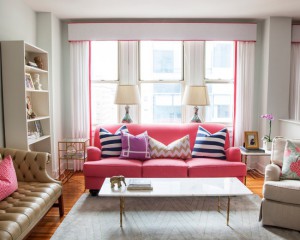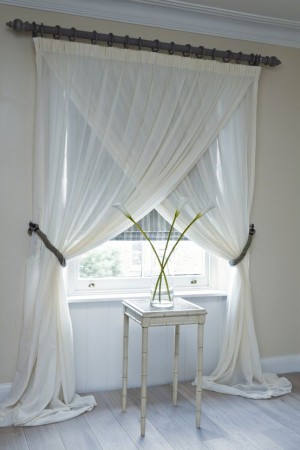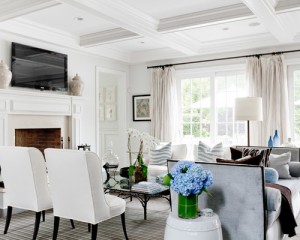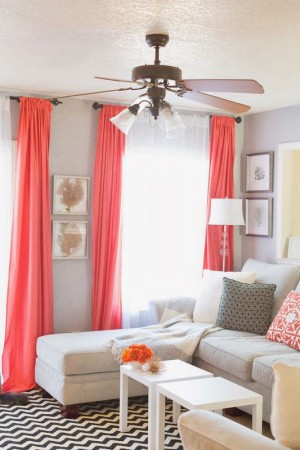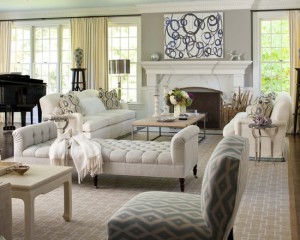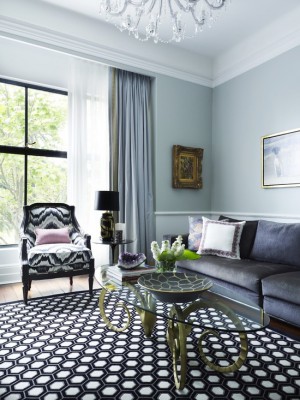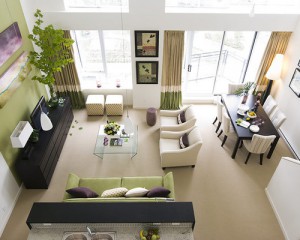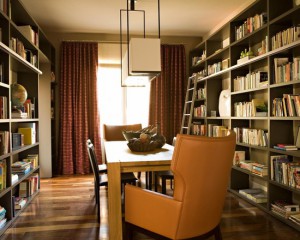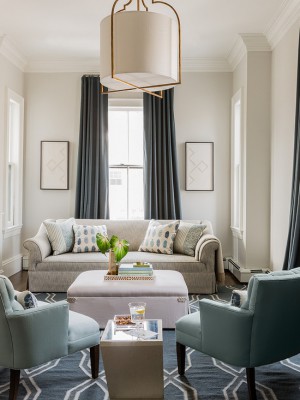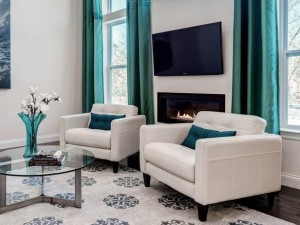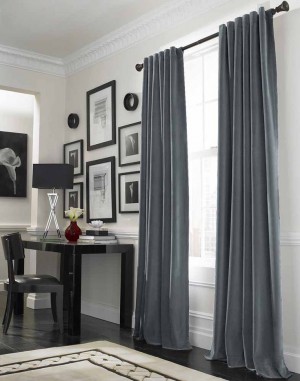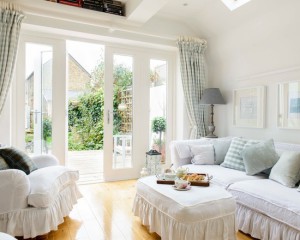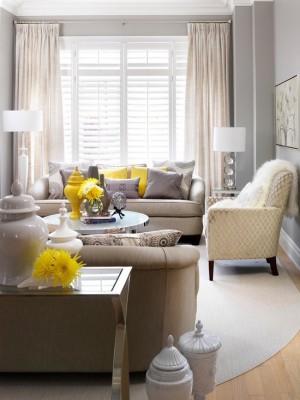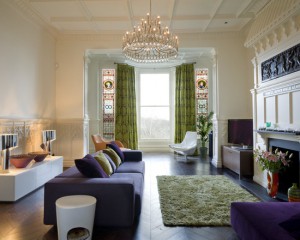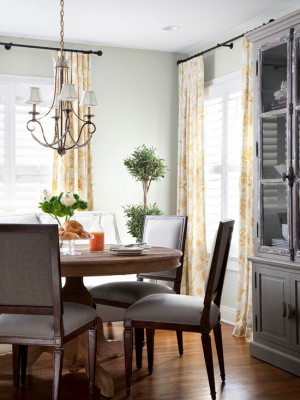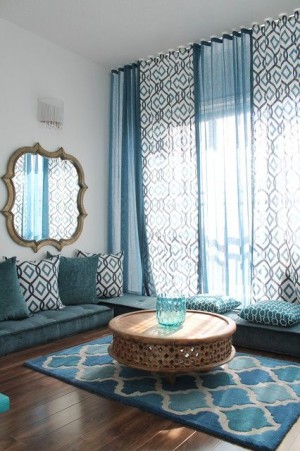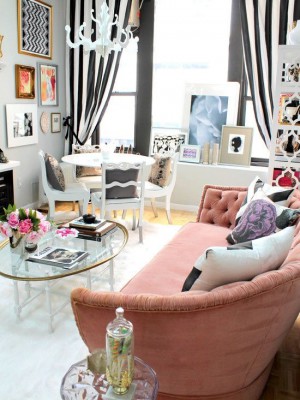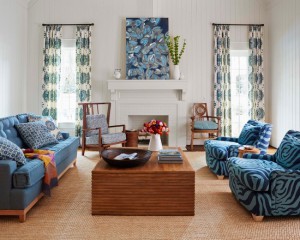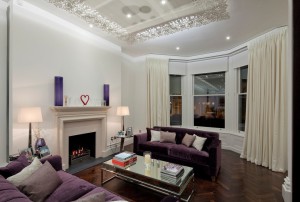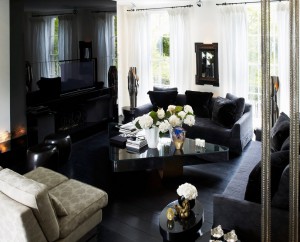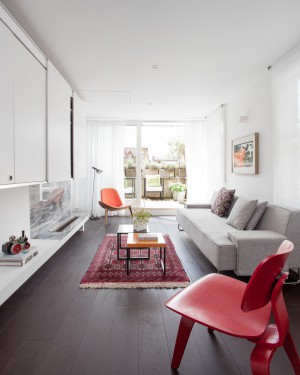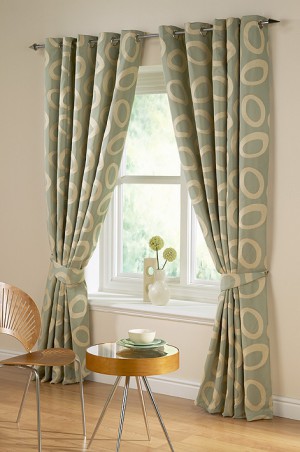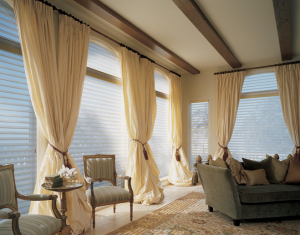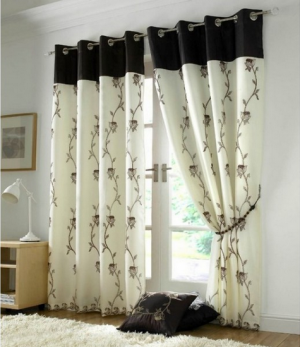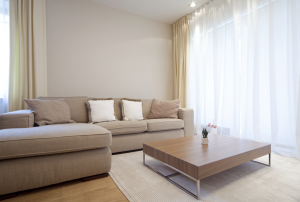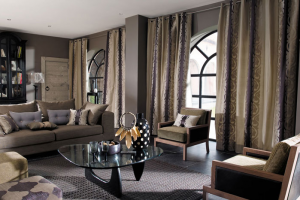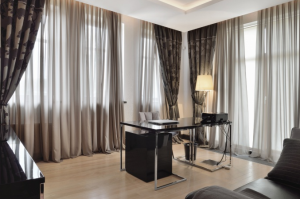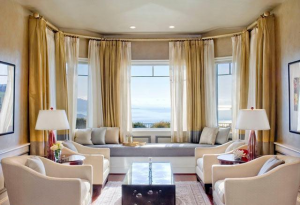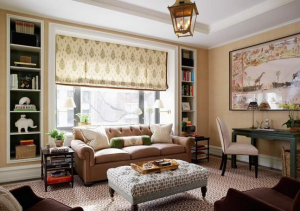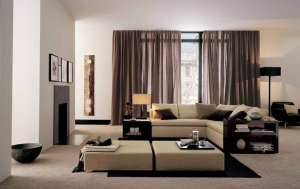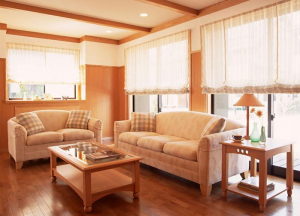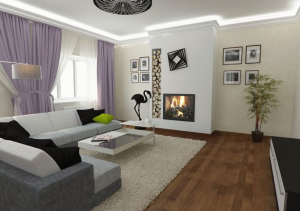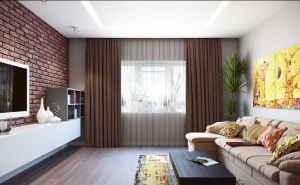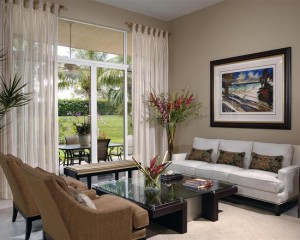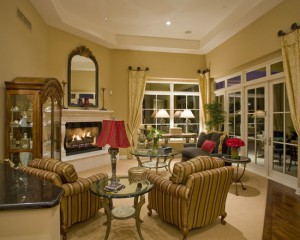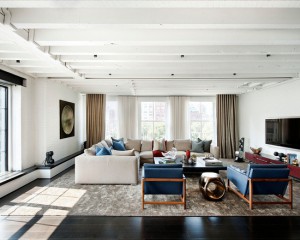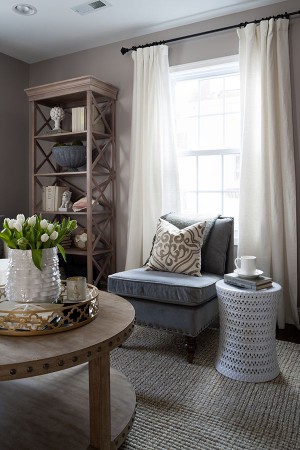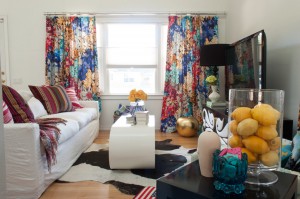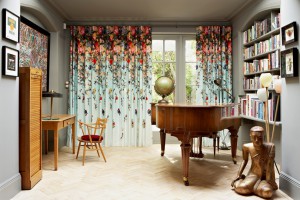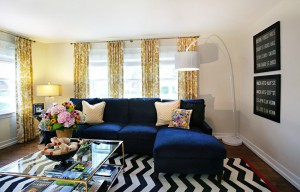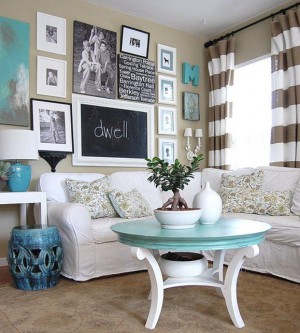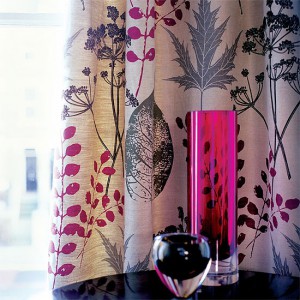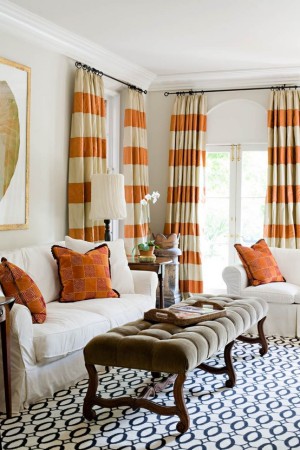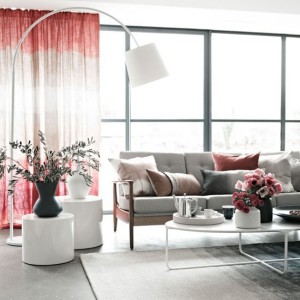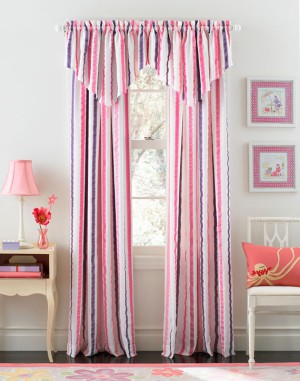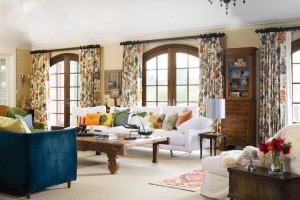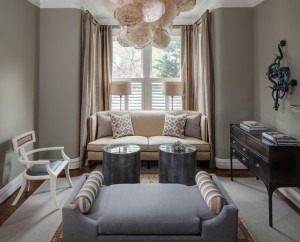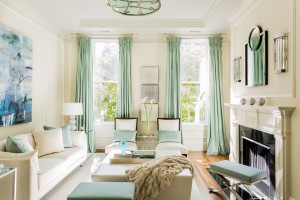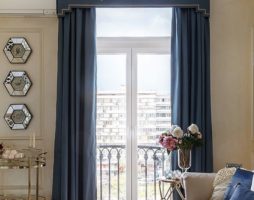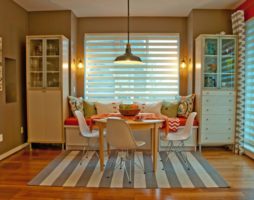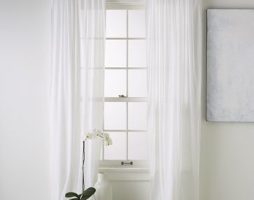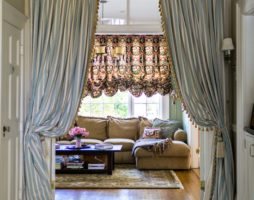The living room is undoubtedly the main room in the house, and I really want its look to be chic and admirable. Textiles will play an important role in this. You need to be able to choose such a design of curtains for the living room so that coziness and comfort settle in the room. Good curtains will not only provide a mood, but also set the general tone for the entire design. That is why the windows should appear not just faceless pieces of fabric, behind which you can hide the window of any room, but real works of art that reflect the tastes of the owners.
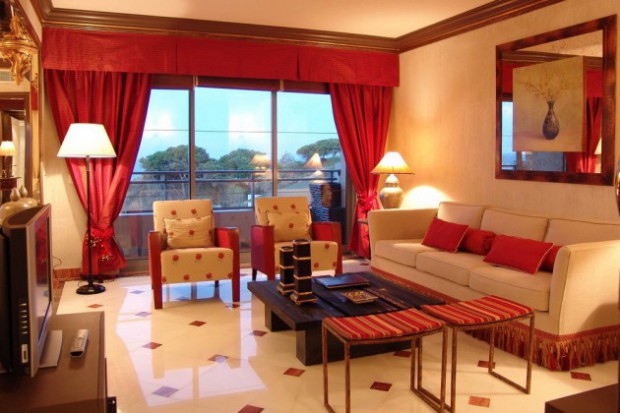
massive red curtains in the interior living room
Classics of the genre
What's happened classic curtains? This is a window drapery made of soft fabric that can create vertical waves. The fact that the curtains are called classic does not mean at all that they are created exclusively for use in this interior design. In this case, the name determines their birthright, showing the fundamental features of the curtains, which became the basis for the creation of all subsequent models of curtains, curtains and drapes.
Classical curtains as a decorative element appeared in many types of interiors, including those that stood out for their special being, which could not but affect their evolution. Thus, subspecies of the classics appeared that retained the main features of curtains - the ability to create vertical waves, but differ in the type of fastening. Today, the following fastening methods can be used in the design of curtains for a classic-style living room:
- Looped.
- Lace.
- Kuliskovoe (typesetting).
- Lambrequin.
- Eyelet.
In the first case, the curtains are attached to rings, which can be wooden, metal, plastic or fabric loops. Any of these elements is hemmed to the base of the curtain and then hung on the hooks of the eaves.
The lace version is very similar to the looped version, but the laces are attached to the eaves by tying.
What is a coulisse? This is a narrow fabric strip that forms a through pocket when hemmed to the fabric cut. It is clear that the drawstring is also placed at the base of the curtain. It allows you to immediately dial the canvas on the pin of the eaves.
Lambrequin is a kind of frill, sewn from fabric identical to the curtains. It is placed on the ledge. The task of the lambrequin is to disguise the fasteners, which in the design of curtains for the living room will not be superfluous..
Eyelets are in the form of rings. They are installed in the border of the base of the curtain. The resulting row of rings is typed onto the eaves bar.
Blinds
This is a highly functional type of curtain. They are practically unmatched. The design of the blinds captivates with its ease of adjustment and the uniqueness of the lighting control system. Today, blinds compete with the usual types of curtains, but until recently they were an office prerogative. Why? It was all due to the unsightly appearance. White aluminum slats or the same strict fabric slats made it easier to drape the windows, which made them look presentable, but they didn’t bring comfort to the atmosphere. Now everything has changed. New technological developments have made it possible to produce blinds in the most incredible versions, which allows them to be successfully used in living room decor.
Roman curtains
"The design of Roman blinds is suitable for living rooms decorated in many stylistic directions, ranging from minimalism to country"
They are attached to the window frame itself, so you already save on cornices. The design of Roman blinds is suitable for living rooms decorated in many stylistic directions, ranging from minimalism to country. And all thanks to the fact that they have an attractive design. An even fabric is collected in horizontal even folds. How? The fact is that the fabric of this type of curtains is pierced with rods and weighted with weights at the bottom. The rope position adjustment mechanism makes it easy to move, lifting one section of the curtain after another. So the fabric is collected in soft folds.

Roman curtains- simplicity and ease of use
French curtains
In the traditional form, these curtains stand out for the sophistication of the texture. A large piece of fabric is collected in separate cascades of falling folds. Since the main characteristic of this type of curtain is drapery, they should be sewn with heavy, textured fabrics in rich colors. Pleat sections are usually arranged symmetrically.
The design of curtains for the living room is given a stylish touch as follows. Each canvas is divided into strips, which are delimited by an internal or external drawstring. This drawstring is needed to pull the cord. The length of the cord should be shorter than the length of the curtain. So, by lifting the canvas by the cord, you can create elegant folds. fasten french curtains similarly to the classic ones: on a standard cornice, tying them in a drawstring way or with masking the base with a lambrequin. French curtains need decoration, because the canvas is decorated with tassels, ties and fringes.
Japanese curtains
Bright representatives of minimalism. These thin sheets of fabric are attached directly to the base of the wall. Weighting agents located at the bottom help to stay even curtains. A characteristic feature of Japanese curtains is the presence of a special mechanism that shifts the canvas to the side. The design of Japanese curtains for the living room can be varied. Here everything will depend on the size of its windows. Since a translucent fabric is usually taken for the manufacture of such curtains, the product itself is very similar to a screen. Room lighting is adjusted by moving the latter along the wall surface. In living rooms, where there are windows, sometimes, Japanese curtains are installed in the ceiling cornices in the entire wall. Two or even three screens in this case move according to the principle of compartment doors, easily entering each other.
Austrian curtains
This model of curtains has a lot in common with the French and Romanesque options described above. Lush folds go along the textured canvas, as uniform as in the case of French curtains, but the assembly mechanism is taken from the Roman style, that is, a horizontal cascade lift is used. When opened, the curtains line up and if it were not for the decorative additions at the bottom, they could be mistaken for classics. Curtains are assembled into basic arcuate-cascading folds using a rope mechanism. Austrian curtains do not go to the floor. They fall only 20-30 centimeters below the windowsill. To mount them, you will need a wall or ceiling cornice.
Curtain design for the living room: the choice of material
Textile
From what exactly to sew curtains you will decide based on two parameters:
- interior requirements.
- curtain type.
There are plenty of interior design styles and each requires the presence of a certain type of textile. Stylish curtains, in turn, are characterized not only by the features of the cut, but also by the quality of the material from which they are sewn.A classic, for example, is the creation of a soft-textured fabric that gathers into waves and smooth folds without any problems. Narim curtains need to be cast on a coarse, but at the same time translucent fabric. It is good if it is embossed or ribbed. Japanese models are created from the thinnest transparent fabric that does not have reliefs, but the noren for them is sewn from a denser fabric, mainly cotton. French curtains are a luxury, so they are made from shiny soft materials. The Austrian ones will also be good when sewing from heavy, even coarse fabric, however, if these curtains are designed for the living room, then it is better to use transparent tulle with a glossy sheen for sewing them.
Color
“If the window, for some reason, needs to be made an unattractive area, then the design of the curtains for the living room should be done in pastel colors”
This parameter is uniquely determined by the interior in which the curtains will be placed, so there are simply no categorical rules for the color scheme. Practicing designers have a number of developments, the use of which will help to avoid problems with decorating the window areas of living rooms.
- The effect of space correction will be produced by curtains, the color of which is many times lighter than the general interior background.
- The definition of contrasts is carried out by curtains matched to the tone of the furniture. This recommendation is valid only when the furniture is at least two meters away from the window.
- In a multi-color interior, curtains should repeat the color of the largest textile element, which can be a sofa, carpet or bedspread.
- If the window, for some reason, needs to be made an area that does not attract attention, then the design of the curtains for the living room should be made in pastel colors:
a) beige
b) sand;
c) cream.
Moreover, it is desirable that the fabric for this be translucent.
- The combination of colors of curtains and interior is mainly made according to the rule: cold tones are complemented by warm ones.
- If textiles in the interior will play an accent role, then bright curtains will need small additional accessories in the same solution. They can be napkins, pillows, furniture upholstery.
- In monochrome decors, curtains will become the key to creating an atmosphere of comfort, so they are made from a darker or vice versa lighter fabric in relation to the background solution. A good step would be to use two-color curtains with the obligatory gradation of the leading color palette of the situation.
The color design of the curtains for the interior of the living room is not just a decoration: it affects the perception of the space as a whole. If you take into account the interaction of volumes and colors, you can create the necessary illusions. For example, the presence of dark curtains will reduce the living room, but the presence of light curtains will make the room seem more spacious.
Need to zoom in on a window? You are welcome! Decorate it with curtains in a color range from blinding yellow to purple red. "Cold" curtains will fill the living room with air and space. The visual increase will be most effective when combining cool colors with blues, greens, whites and grays.
Curtains in stylish interiors
The main factor in choosing curtains is the interior. The stylistic decisions of the latter are not without personal preferences, so there will always be features in the decor of window openings. Appropriate fabrics, types of draperies, embellishments and color aspects will need to be selected.
Greek antiquity in the decor will require the addition of dark and very thick curtains, sewn from fabrics of cold shades. In addition to the classic drapery, the design of the curtains for the living room should include a lambrequin with pompous gold tassels. In the spirit of the style, there will also be tie-backs with a gold and cupronickel metallic sheen. The color of the curtains here is traditionally combined with the furniture.
In Roman antiquity, oddly enough, classical curtains are also used. There should be two layers. The first is translucent, of calm colors, always monophonic, ideally in harmony with the color of the walls. The top one is always darker. From the decor - fabric tiebacks. Fringe or tassels may be present. The color scheme is only in the warm spectrum. Roman blinds can be hung as the first layer.
The Romanesque style also prefers the classics in the design of curtains for the living room, however, not quite in its purest form. Here, not pickups with brushes, but color combinations will come out on top. Two-layer sets of curtains with deep pleats, lambrequin and contrasting colors are ideal. The main tone should be brighter than the background interior solution, the additional one should repeat the color of the furniture. You can add tulle to the kit as a third layer. It should be in harmony with the color of the walls, but not repeat their color.
In Gothic interiors, the window is not a compositional center, so it is decorated with curtains of the most uncomplicated design. In terms of color, they are no more than a tone darker than the walls. Simple fabric ties and a single-row lambrequin are allowed. The fabric is simple, perhaps with a small pattern.
The Renaissance is a lover of asymmetry, therefore the design of curtains for such a living room will contain a complex and heavy lambrequin. Cloth curtains without folds, with a glossy sheen and fringe. In color solutions, the style is also diverse, so the curtains usually echo the dominant range (sometimes three shades at once), although they can repeat only one of the leading colors.
Baroque is characterized by bold combinations, so the curtains here are often in red and gold and with additional decorations from ribbons, tassels, and tiebacks. The pomposity and pretense of luxury of the interior entails the appearance of heavy fabrics with a glossy sheen in classic French drapery.
Rococo is gentle and light. The textiles in it are also translucent, and its colors are slightly blurry, as if “diluted” with whiteness. The scheme of the cut of the curtains is classic, with a modest lambrequin. In the design of curtain fabric for such a living room, most often there is embroidery or a pattern. There are pickups, but they are exclusively fabric. Color corridor within the same scale, for example, blue silk curtains and blue and white tulle in a small fold.
Classicism will give itself away by contrasting tulle and lambrequin. Drapery in any style that does not prejudice, however, as well as decorative additions to the ensemble. The main task is to be able to harmonize the dark lambrequin with transparent tulle.
Empire - these are curtains in beige and gold colors, combined with blue, brown and red splashes. The classic drapery is complemented by a dark, in the color of one of the auxiliary shades, lambrequin. A variant of light curtains in a small fold with dark tiebacks is possible.
Art Nouveau, with its bizarre forms and floral plots, gives absolute scope for the design of curtains. Any of their well-known modifications will take root in this interior, but classic models remain truly satisfying stylistic requests. Dense fabric, standard cornice fastening, absence of lambrequin and strict vertical folds - this is the ideal curtain design for a modern living room. In the color scheme, it is possible to combine shades. The main thing is to get into the main interior tones. In this decor, contrasting white and black curtains or blue, beige, gray curtains often appear. A large pattern with a floral motif will replace additional accessories.
In constructivism, you will need to work out the space correctly so as not to make it too textured and not overload with details. In such a living room it is better to use:
- Blinds.
- Japanese curtains.
- Fabric rolls.
- Single color pleats.
In the color perspective, the curtains will always be warmer than the background of the walls. It is allowed to have a sophisticated pattern on them with a repeating plot.
Sewing curtains for an unusual interior in the spirit of pop art can have a French or Austrian direction. An alternative option for them will be strict colorful ensembles in classic drapery, peremptorily standing out against the background of “calm” walls.
The design of curtains for a living room with a complex hi-tech logic should become both a plot continuation of the wall and the main color accent of the decor. In monochrome interiors, asymmetric or rope models, as well as blinds, do an excellent job with this task.
Photo gallery - design of curtains for the living room:
- Cool Gray Curtain Ideas For Large Windows Modern Home Office Table

